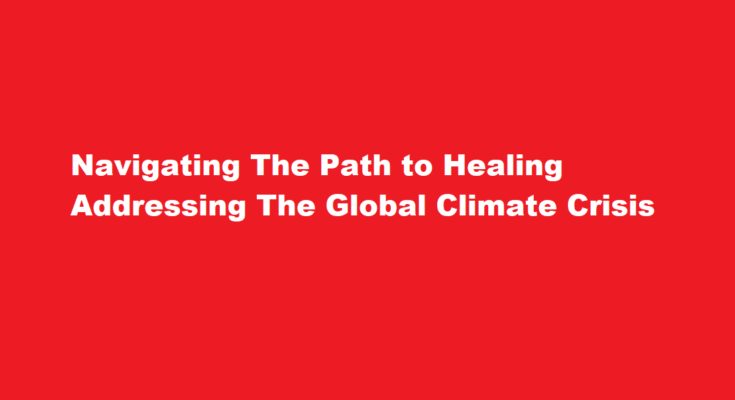The global climate crisis has reached a critical juncture, demanding immediate and coordinated action to not only halt its progression but also to reverse the damage already inflicted on our environment. Rising temperatures, extreme weather events, and the loss of biodiversity are clear indicators that urgent measures are needed. By embracing a multi-faceted approach that combines policy changes, technological innovation, individual action, and international cooperation, humanity can pave the way for a sustainable future.
Shifting to Renewable Energy
One of the most effective steps in tackling the climate crisis is transitioning from fossil fuels to renewable energy sources. Governments and industries must invest heavily in solar, wind, hydroelectric, and geothermal technologies. Embracing renewable energy not only reduces greenhouse gas emissions but also creates jobs and drives economic growth. Countries should set ambitious targets for renewable energy adoption and provide incentives for citizens and businesses to make the switch.
Implementing Stronger Environmental Policies
Governments play a pivotal role in addressing the climate crisis. Robust policies that limit emissions, encourage sustainable practices, and protect ecosystems are essential. Carbon pricing mechanisms, emissions caps, and stringent regulations on industries can drive significant change. Additionally, safeguarding natural habitats through protected areas and reforestation efforts aids in both carbon sequestration and biodiversity conservation.
Promoting Sustainable Agriculture
Agriculture is a major contributor to greenhouse gas emissions and deforestation. Shifting towards sustainable farming practices such as agroforestry, organic farming, and reduced meat consumption can significantly reduce the carbon footprint of the sector. Sustainable agricultural methods also help restore soil health and water resources, fostering resilience in the face of climate change.
Enhancing Technological Innovation
Innovation can be a game-changer in reversing environmental damage. Researchers and businesses must collaborate to develop and deploy technologies that capture and store carbon, improve energy efficiency, and provide alternative solutions for resource-intensive processes. Supporting research and development in fields like carbon capture and sustainable materials can yield breakthroughs with far-reaching impacts.
Empowering Individuals
Collective change begins with individual action. People can make a difference by adopting sustainable habits such as conserving energy, reducing waste, using public transportation, and supporting eco-friendly products. Education and awareness campaigns play a crucial role in motivating individuals to make conscious choices that contribute to environmental healing.
Fostering International Collaboration
The climate crisis transcends borders, requiring global cooperation. International agreements like the Paris Agreement provide a framework for nations to work together towards common goals. Countries must honor their commitments and strive for more ambitious targets to limit global warming. Collaborative efforts also include sharing best practices, technologies, and resources to amplify the impact of climate initiatives.
Investing in Resilience
As the effects of climate change continue, it is essential to invest in building resilience. This includes constructing infrastructure that can withstand extreme weather events, developing early warning systems, and planning for climate-induced migrations. Prioritizing resilience helps communities adapt to the changing environment and reduces the socio-economic impact of climate-related disasters.
Supporting Environmental Education
Education is a cornerstone of change. Integrating environmental education into curricula at all levels equips future generations with the knowledge and tools to make informed decisions. By fostering a deep understanding of the interconnectedness between human activities and the environment, we can cultivate a sense of responsibility and stewardship for the planet.
FREQUENTLY ASKED QUESTIONS
Can we reverse the damage done to climate change?
While the effects of human activities on Earth’s climate to date are irreversible on the timescale of humans alive today, every little bit of avoided future temperature increases results in less warming that would otherwise persist for essentially forever.
What are humans doing to stop climate change?
Planting trees, restoring seagrasses, and boosting the use of agricultural cover crops could help clean up significant amounts of carbon dioxide.
Conclusion
The global climate crisis demands a holistic and integrated approach that encompasses policy changes, technological advancements, individual commitment, and international unity. By transitioning to renewable energy, implementing strong environmental policies, promoting sustainable practices, embracing technological innovation, empowering individuals, fostering international collaboration, investing in resilience, and supporting environmental education, we can pave the way for a sustainable and thriving planet. The time to act is now; every effort counts in healing our world and securing a better future for generations to come.



